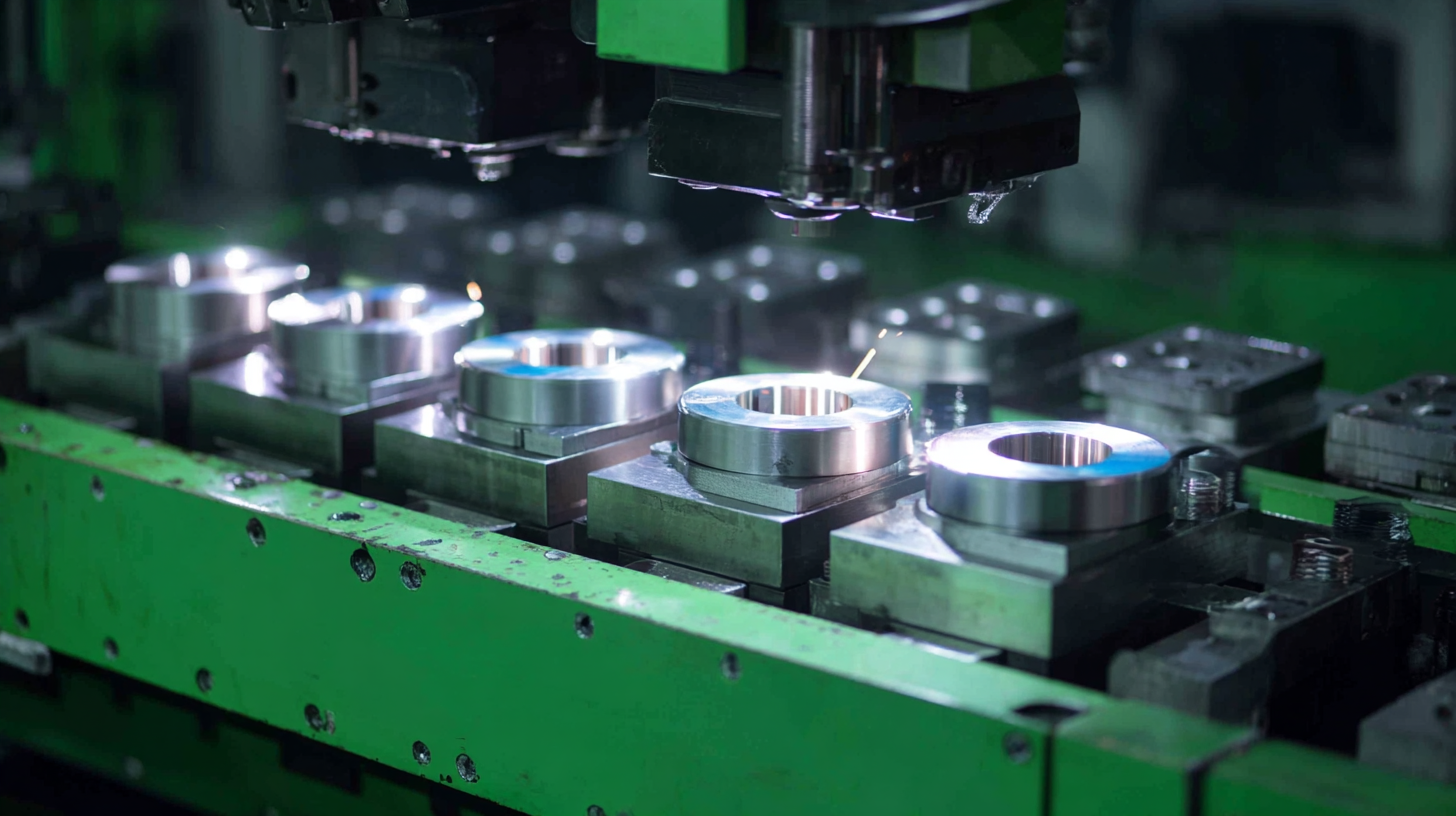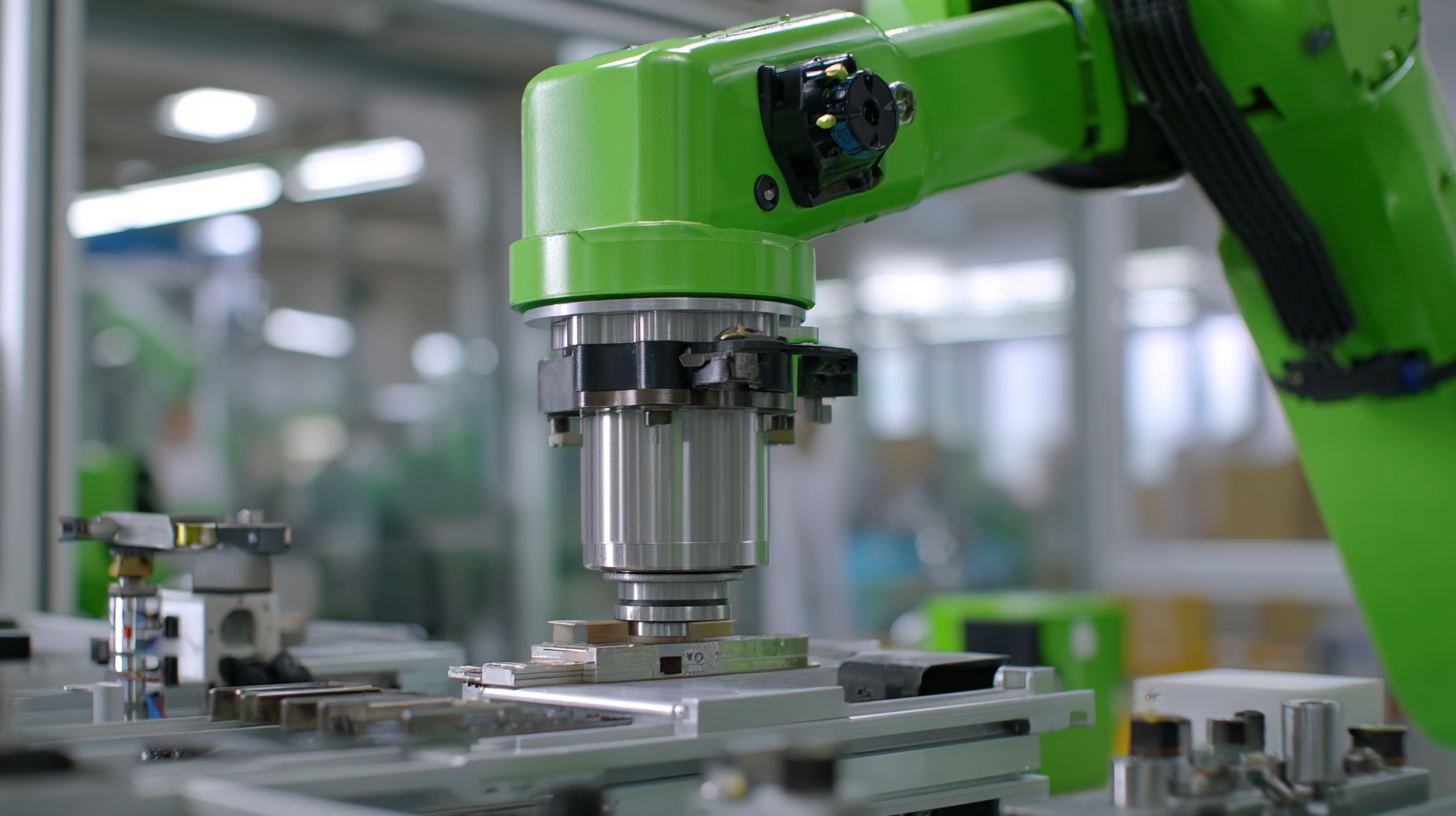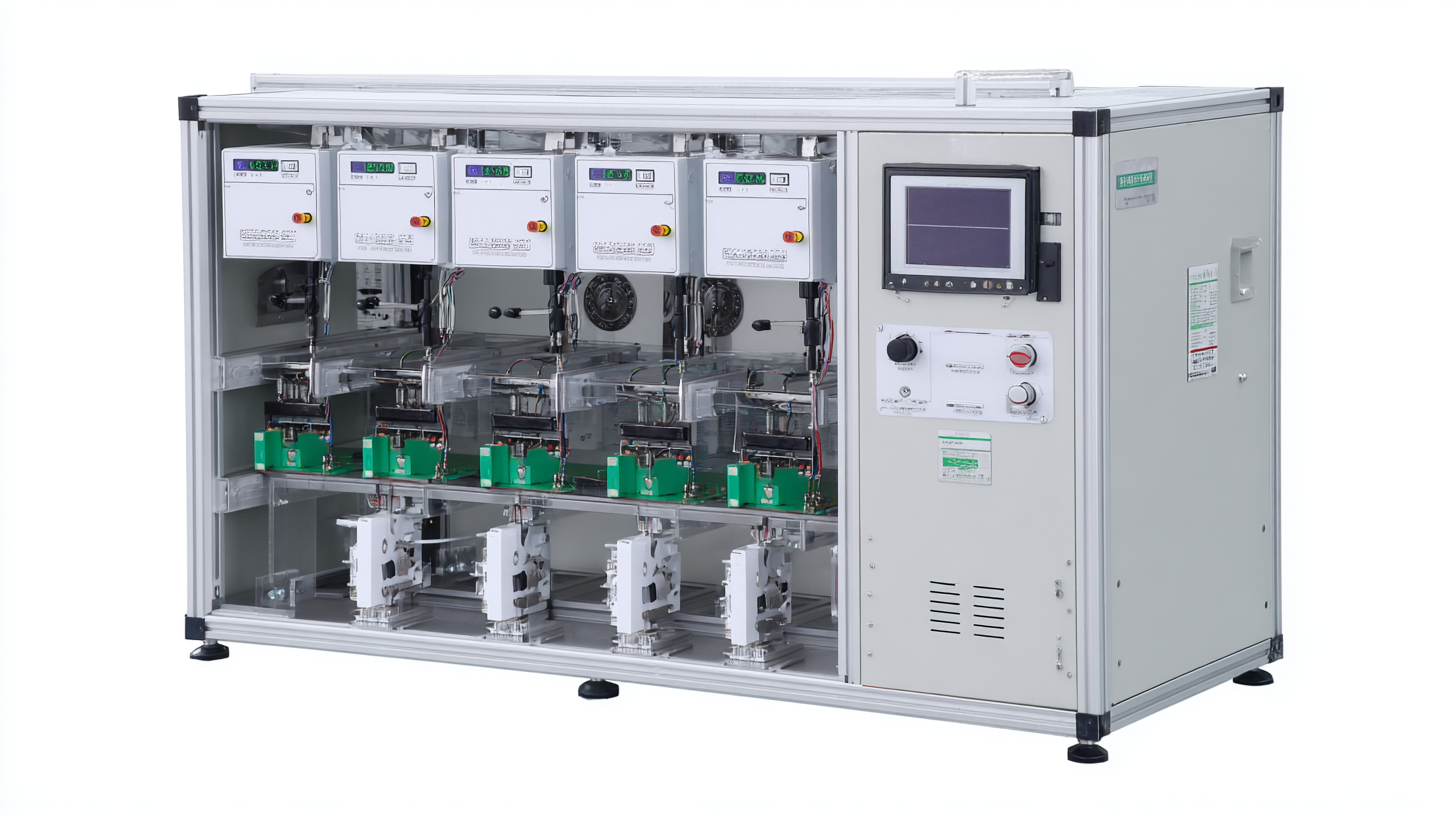Leave Your Message
In today's rapidly evolving manufacturing landscape, the quest for sustainable and efficient solutions has led global buyers to seek out innovative technologies that not only meet production demands but also align with environmental standards. One such advancement is the Green Ultrasonic Welder, a cutting-edge tool that combines high-performance welding capabilities with eco-friendly operation. As industries increasingly prioritize sustainability, this remarkable device emerges as a top choice among manufacturers worldwide. With its ability to reduce energy consumption and waste while maintaining superior quality in bonding materials, the Green Ultrasonic Welder not only enhances productivity but also supports the transition to greener practices. In this blog, we will explore the advantages of investing in this state-of-the-art equipment from world-class Chinese factories, shedding light on how it can revolutionize manufacturing processes for environmentally conscious buyers.

In today's eco-conscious world, the adoption of green ultrasonic welders in manufacturing processes is a vital step towards sustainability. Recent reports indicate that ultrasonic welding technology can reduce energy consumption by up to 50% compared to traditional welding methods. This reduction not only lowers operational costs but also significantly minimizes carbon emissions, making it a favored choice for manufacturers aiming to meet global sustainability standards.
In addition to energy efficiency, green ultrasonic welders offer precision and versatility in various applications. The technology ensures strong and reliable joints without the need for additional adhesives, thus eliminating waste and enhancing product lifespan. According to a recent industry study, companies utilizing ultrasonic welding techniques have reported a 30% increase in production efficiency, highlighting its role in optimizing sustainable manufacturing practices.
**Tips for Manufacturers:** When considering the switch to green ultrasonic welders, look for equipment that is certified for energy efficiency. Also, invest in training for your team to maximize the benefits of this technology. Implementing maintenance schedules can further prolong equipment life, ensuring you capitalize on both environmental and economic advantages.
| Advantage | Description | Impact on Sustainability | Potential Cost Savings |
|---|---|---|---|
| Energy Efficiency | Uses less energy compared to traditional welding methods. | Reduces carbon footprint and conserves resources. | Lower operational costs through reduced energy consumption. |
| Minimal Waste | Produces less material waste during the welding process. | Promotes circular economy by maximizing material use. | Cost savings through reduced raw material wastage. |
| Air Quality Improvement | Produces fewer airborne pollutants compared to other welding methods. | Contributes to healthier work environments and better public air quality. | Potential savings on health-related costs for employees. |
| Precision and Control | Offers high precision in welding processes, reducing the chance of errors. | Enhances product quality, leading to less waste and rework. | Decreases costs associated with defective products and re-manufacturing. |
| Versatility | Can be used for a variety of materials including plastics and metals. | Encourages sustainable practices across different industries. | Reduces need for multiple machines, lowering capital expenditure. |
When it comes to ultrasonic welding, energy efficiency and cost savings are paramount for businesses looking to invest in sustainable manufacturing processes. According to a report by the International Institute of Ultrasonic Welding, companies can achieve energy savings of up to 50% by switching to advanced green ultrasonic welders. These machines not only consume less power but also enhance production speeds, which can lead to significant cost reductions. In industries where precision and speed are critical, the transition to energy-efficient technology becomes a strategic advantage.
Tips: When evaluating ultrasonic welders, consider devices with adjustable power settings. This feature allows for optimal energy consumption depending on the task, ensuring that you are not over-consuming energy for lighter jobs. Furthermore, investing in machines with shorter cycle times can also enhance overall productivity, highlighting how energy savings align with operational efficiency.

Moreover, the initial investment in the best green ultrasonic welders can lead to long-term financial benefits. A recent study indicated that companies that upgraded to energy-efficient equipment reported annual savings ranging from $10,000 to $100,000, depending on their manufacturing scale. This not only justifies the upfront cost but also positions businesses as environmentally responsible and competitive players in the market.
Tips: To maximize your investment, regularly maintain ultrasonic welding equipment. Proper upkeep can prevent energy loss and keep the machines operating at peak efficiency, ensuring that your cost savings remain consistent over time.
The comparative analysis between green ultrasonic welders and traditional joining methods reveals significant advantages for the former, particularly in sectors such as aerospace and textile fabrication. Traditional methods like riveting and conventional welding often face challenges, especially when dealing with dissimilar materials. For instance, the immersion pulse-echo ultrasonic technique has shown promise in enhancing disbond-type defect detectability, a crucial aspect when constructing lightweight structures. This move towards advanced ultrasonic technology demonstrates the industry's need for improved reliability and efficiency.

Recent studies indicate that ultrasonic welding can achieve uniform thickness bonding in hybrid textiles more effectively than conventional methods, reducing potential defects and optimizing material use. In aerospace applications, friction stir welding presents a forward-thinking alternative, highlighting the speed and reduced energy consumption that ultrasonic welding can offer. According to industry reports, the embrace of these innovative welding techniques could potentially decrease construction times by 30% while maintaining high structural integrity, making them a valuable asset for global buyers looking to stay competitive in rapidly evolving markets.
Ultrasonic welding has emerged as a critical technology in enhancing material integrity while promoting scalable production processes in various industries. By utilizing high-frequency ultrasonic vibrations, this welding method can create strong, durable connections between different materials without adding heat or solvents, thereby preserving their intrinsic properties. Recent studies indicate that ultrasonic welding can improve bond strength by up to 20% compared to traditional methods, making it an ideal choice for applications requiring high reliability.
In the context of flexible electronics, ultrasonic welding is proving to be a game changer. Researchers have demonstrated that it can be effectively employed to build multi-layer, flexible circuit boards with minimal cost. Traditional bonding methods for flexible circuits often require extensive resources and time, but ultrasonic welding reduces both by facilitating rapid assembly while ensuring robust connections between layers. This method not only decreases production costs significantly but also supports the growing demand for lightweight and adaptable electronic applications across various sectors.
According to industry reports, the ultrasonic welding market is projected to grow at a CAGR of 6.5% through 2025, underscoring its increasing importance in manufacturing processes. As companies strive to optimize production scalability and material integrity, ultrasonic welding positions itself as a leading solution that meets these emerging needs efficiently and sustainably.
In recent years, green ultrasonic welders have gained significant attention in various industries due to their environmentally friendly approach and efficiency. Case studies from renowned manufacturers illustrate the transformative impact of these machines. For instance, a prominent automotive company implemented a green ultrasonic welding system for assembling electric vehicle batteries. The results were remarkable—production speed increased by 30%, while energy consumption dropped by 25%. This not only reduced operational costs but also reinforced the company's commitment to sustainability.
Another compelling example can be found in the packaging industry, where a leading firm adopted green ultrasonic welders to enhance their production line. Traditional methods often relied on adhesives that were harmful to the environment. By switching to ultrasonic welding, the company not only eliminated the use of these adhesives but also improved seal integrity and reduced material wastage. The implementation showcased a significant reduction in their carbon footprint, aligning their operations with global sustainability goals while boosting product quality. These real-world applications underline how green ultrasonic welders are redefining manufacturing practices and paving the way for a more sustainable future.
